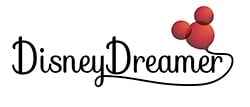Original
Walt Disney Knew How To Get The Word Out
Walt Disney Knew How To Get The Word Out
You need to get the word out about your products but your economic resources are limited. That was often the dilemma that faced Walt Disney. From the early days of Mickey Mouse Walt was often burdened with heavy debt and had to find many creative ways to let the public in on what he was doing. His innovative marketing ideas could be used by businesses seeking publicity ideas today.
1) Capitalize on current events: In 1930 Walt felt that Mickey Mouse who was constantly surrounded by barnyard animals should get a dog. He vividly described to his artists a funny mutt that his family kept on their farm when he grew up in Marceline Missouri, to the point of getting down on all fours, sniffing around and making barking noises. Animator Norman Ferguson transformed Walt’s great acting performance into a cartoon canine named Rover . . . for five months. Then Disney read that an amateur astronomer named Clyde Tombaugh had discovered a ninth planet in our solar system called Pluto and Walt cashed in on the resulting publicity by giving Mickey’s pet a new name.
2) Get your employees behind your product: Snow White And The Seven Dwarfs (1937) took three long years to complete and Walt suffered through many doubts about the film’s marketing direction. He worried when the press called it “Disney’s Folly” , then realized it was good to have people talk about it. He rejected a salesman’s idea that he should eliminate the dwarfs from the advertising, pushing the love story between Snow White and the Prince instead. But throughout the stressful production his cartoonists stayed loyal and enthusiastic, often using their free time to run around Los Angeles to tack up advertising posters. Snow White was a world wide success but perhaps the artists got a little too excited. After the money rolled in Walt threw his animators a party in gratitude. He later regretted it when his some of the more bohemian members of his staff chose the occasion to let their hair down, and the family event turned into a wild orgy. Any rift that the outrageous behavior caused with the boss was forgotten by 1953 when many of his employees came to Walt’s aid to financially back Disneyland.
3) Embrace new technology: In 1927 Walt made two Mickey Mouse cartoons that were rejected by distributors. Then sound was ushered into the movie business with Warner Bros. The Jazz Singer. Fearful silent film stars began consulting astrologists to predict the future, but most movie moguls shrugged off actors talking as a fad. Movies without dialogue sold throughout the world, who wanted to rock the boat? The unknown Walt Disney seized the opportunity, and with great difficulty added synchronized sound to the third of his Mickey Mouse cartoons, Steamboat Willie (1928) which resulted in the rodent becoming a national craze. Later history repeated itself in the early 50’s when most of the moguls rejected the idea of television. Walt embraced the new medium as a way to keep the public informed about what his studio was doing.
4) Publicity is better than advertising: Today the Walt Disney Company is an aggressive marketing behemoth that spends up to fifty million advertising movies. Recent campaigns have included displaying the title of films on grocery divider sticks at supermarket checkout stands. But their founder had a different philosophy. As a young man Walt had left his job working for an advertising firm to start his own entertainment company and never wavered from his preference. When he entered television he always frowned on commercials, preferring instead to get publicity with fun, behind the scenes looks at new projects. He eventually left his first network ABC, accusing them of ruining the very popular Mickey Mouse Club (1955-1959) with too many interruptions.
5) What’s In A Name?: Originally the studio started in 1923 was called the Disney Brothers. The younger, temperamental and risk-taking Walt was in charge of the creative direction, while the older and more cautious Roy, a former bank teller, kept the books. For forty-three years their partnership was a combination of love, ferocious arguments and give and take. In 1926 Walt convinced Roy that they should change the name of their enterprise to Walt Disney, it would make their products more identifiable. A bemused Roy went along with it, sensing his sibling’s greater need for fame. The name Walt Disney remained associated with family entertainment even after both brothers passed on.
In 1994 Warner Bros. had high hopes for a feature cartoon called Thumbelina. But preview audiences found it boring, a reaction that bewildered disappointed studio executives. A week later they showed it again with a small change: The exact same film said Walt Disney Presents in the opening credits. The test scores went way up and several people in the audience inquired where they could buy Thumbelina merchandise.
http://www.hollywoodstories.com.
